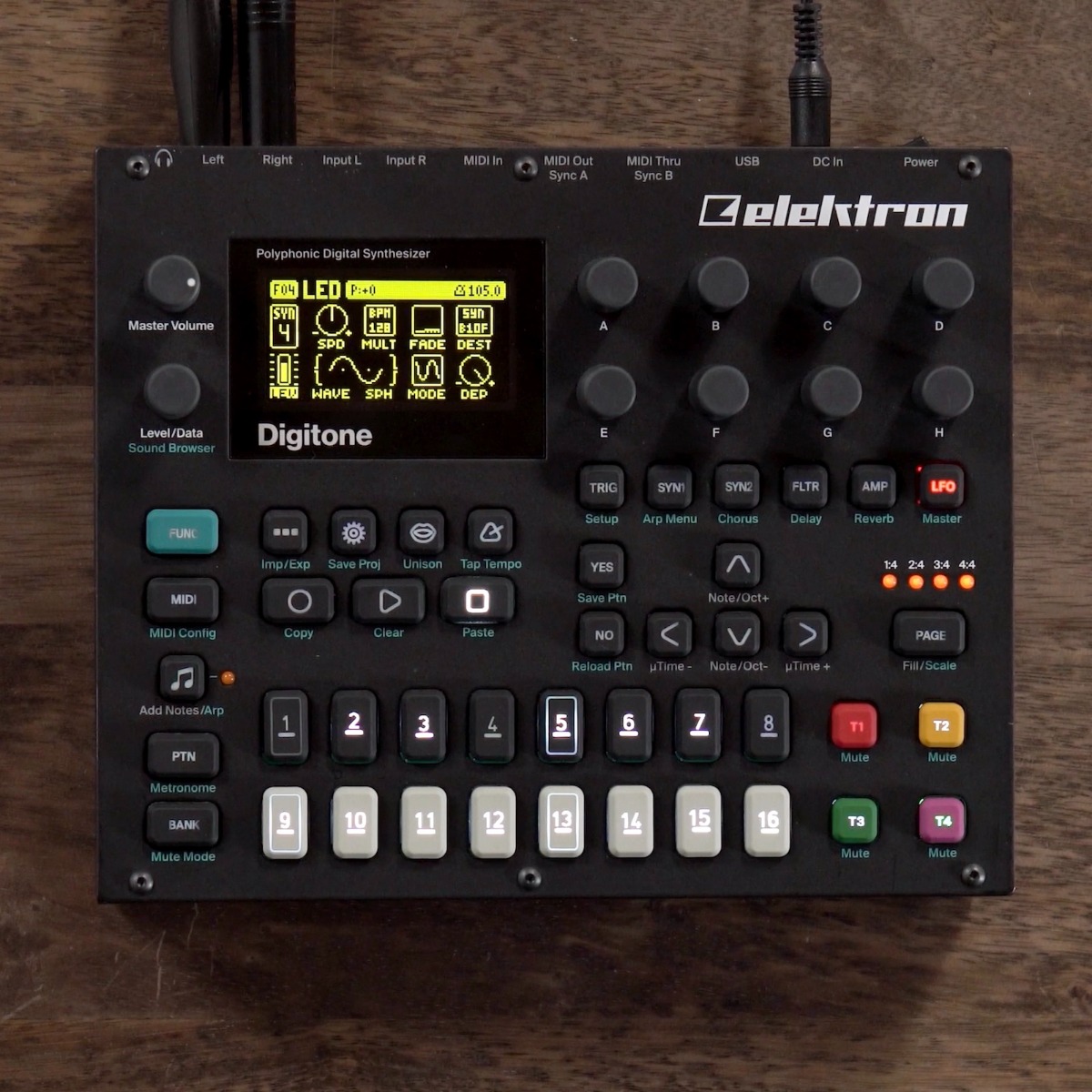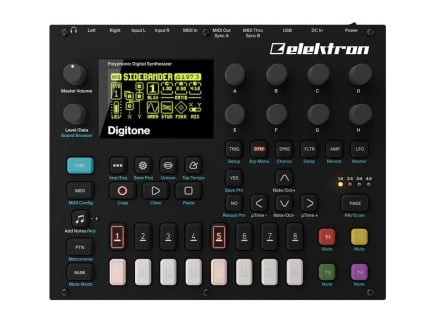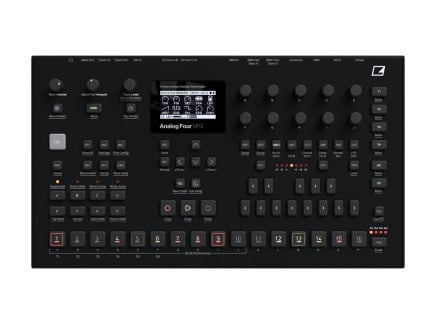After a phenomenal update to the Digitakt last year, Elektron have finally unveiled a new OS firmware for the Digitone, tidying up the user experience and bringing the Digi boxes in line with each other. While the new features might not present themselves as a radical change in how the instrument operates, they do solidify the Digitone's capabilities as a powerhouse groovebox that can hold its own against the Digitakt or any synthesizer out there. Check out the video above where we hang out with Mario from Elektron, talk about the new OS, and bust out a few jams—and keep reading for more details on the update.
LFO Page Updates

One of the biggest UI changes in the new firmware pertains to the LFO settings, having been greatly overhauled to match the behavior and feel of the Digitakt. Notably, the LFO shape is super clear and visible, with a waveform plot that also conveys its start phase offset and polarity. Flip the speed or depth down into the negative range, and you'll see the display instantly update to match the resulting LFO direction.
Additionally, the two LFO pages have a totally new layout, where instead of splitting the eight parameters of both LFOs across two pages, each LFO now has its own dedicated page. Personally, this change feels more intuitive to me, having a full view of what each LFO is doing with the ability to quickly toggle between the two. It's a lot easier to keep track of what's going on, especially when you're getting more adventurous with your sound design.
Filter Tweaks and Changes

Moving on to the Filter page, bypassing the Multimode filter is now indicated on the frequency and resonance graph by using a dashed line, rather than solid. This is helpful for quickly glancing at your settings in a performance, should you want to let all of your frequencies pass through, or solely rely on the Base-Width filter for your tonal shaping.
Functionally speaking, Elektron also added an envelope delay setting for the Multimode filter, which defines a set amount of time before the Attack stage of the envelope begins. This is great for building dynamic and evolving patches, where your filter sweeps are offset from the FM operator or amplitude envelopes. This setting is accessible in two places: on the second Filter page with encoder A, or by holding Function and moving encoder A on the first page.
Remember Subpages
If you've spent any amount of time with an Elektron instrument, you'll know that a lot of the power lies in how flexible their sound engines are. While any given section is rarely more than two or three pages deep, part of the journey to mastery is learning to navigate to key parameters in the heat of a performance. While the Digitone doesn't have Scenes like the Octatrack or a Performance mode like the Analog Four, it does now have a system setting called Remember Subpages.
With this setting enabled, when toggling through the various subpages of a Parameter, if you then leave to access a different menu and then return to the same Parameter, you'll come back to the same page that you were on when you left. This is super handy for performances, where you might want to immediately jump to certain controls at an instant. For example, if you like to tweak effects levels on the second page of the Amp Parameter, this setting makes it so that you can hop back and forth between different parameters, but always come back to those controls on the Amp section. Similarly, this is also great for further sculpting a sound with the Base-Width filter, should you have meticulously defined settings on the Multimode filter and its envelope.
Global Fx/Mix Settings

In the past, crafting performances on the Digitone meant that extra care and consideration was needed between effects parameters across patterns, including the chorus, delay, reverb, and master overdrive. But now in OS 1.32, a new setting for defining Global modes for the effects and mixer settings makes it possible to keep cohesion between patterns, just as was added to the Digitakt in its previous update. For example, using a long ethereal reverb for a pad on one pattern won't shrink down to nothingness upon changing patterns manually or through a chain. I personally like to tweak and play with the delay settings across patterns, so this option is greatly appreciated on my end.
Another thing affected by this change is the Internal and External Mixer settings. The Internal mixer controls the level of all four tracks across patterns, which can be helpful of course, but perhaps more importantly the External Mixer may also be set to Global mode. If you're piping in external instruments and want to hear them consistently across patterns and with the same effects send levels, this is a gamechanger for establishing the Digitone as a centerpiece of your setup.
Dual Mono Input Mode
Speaking of the External Mixer, the Left and Right inputs may now be detached from each other, operating in a dual mono configuration. If you have other grooveboxes, synthesizers, or even a guitar, you can have independent level and effect settings for both inputs. This opens the Digitone up for more flexible performance rigs, and can be handy when recording to a mobile device with the class-compliant USB audio functionality.
FM Groovebox Powerhouse
Any update for a beloved synth like the Digitone is appreciated, and between the bug fixes and LED intensity settings that were also added, OS 1.32 is a solid enhancement to improve the user experience. We love the continued attention for the Digi series, and we're stoked to see what comes from Elektron in the future.









